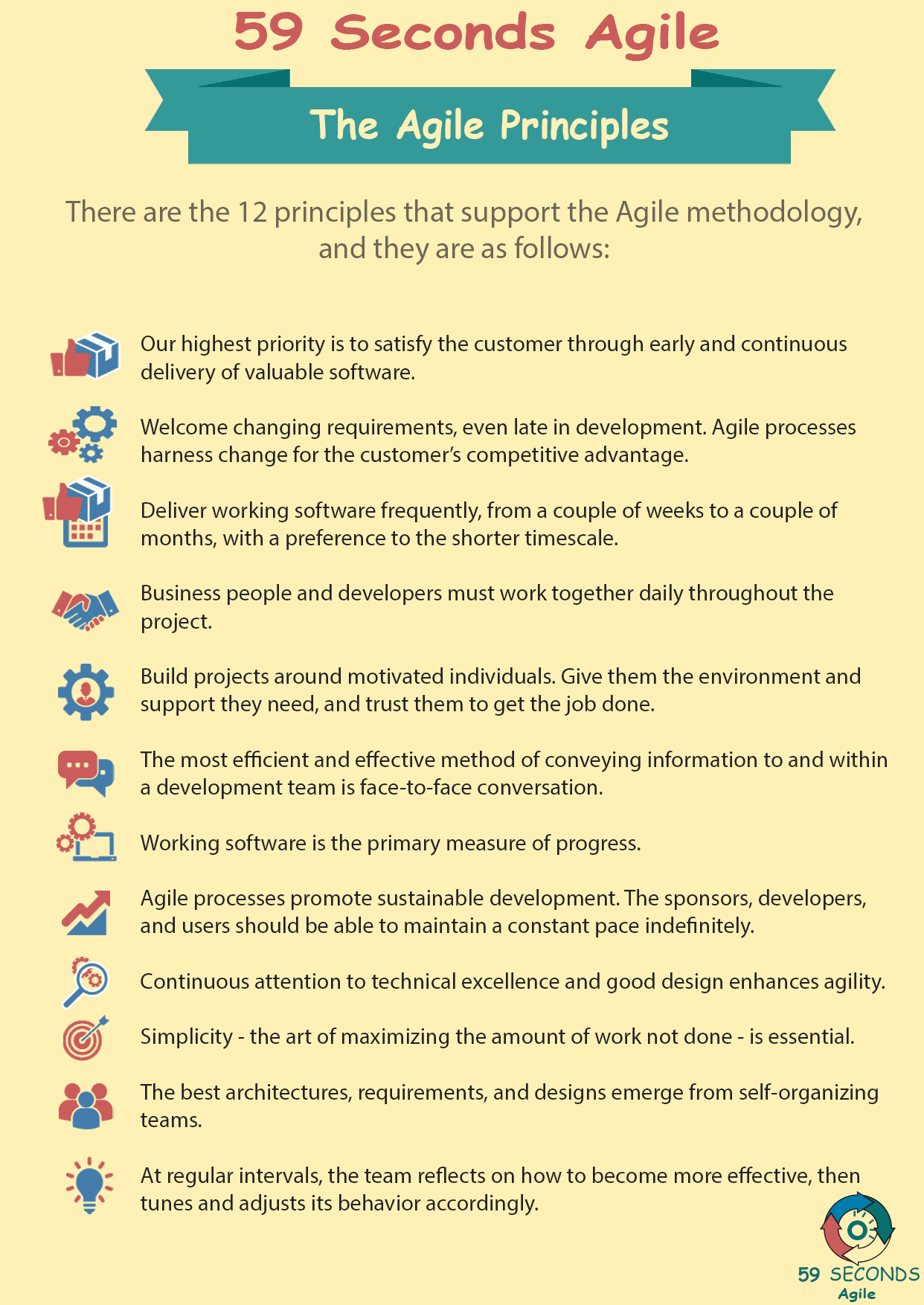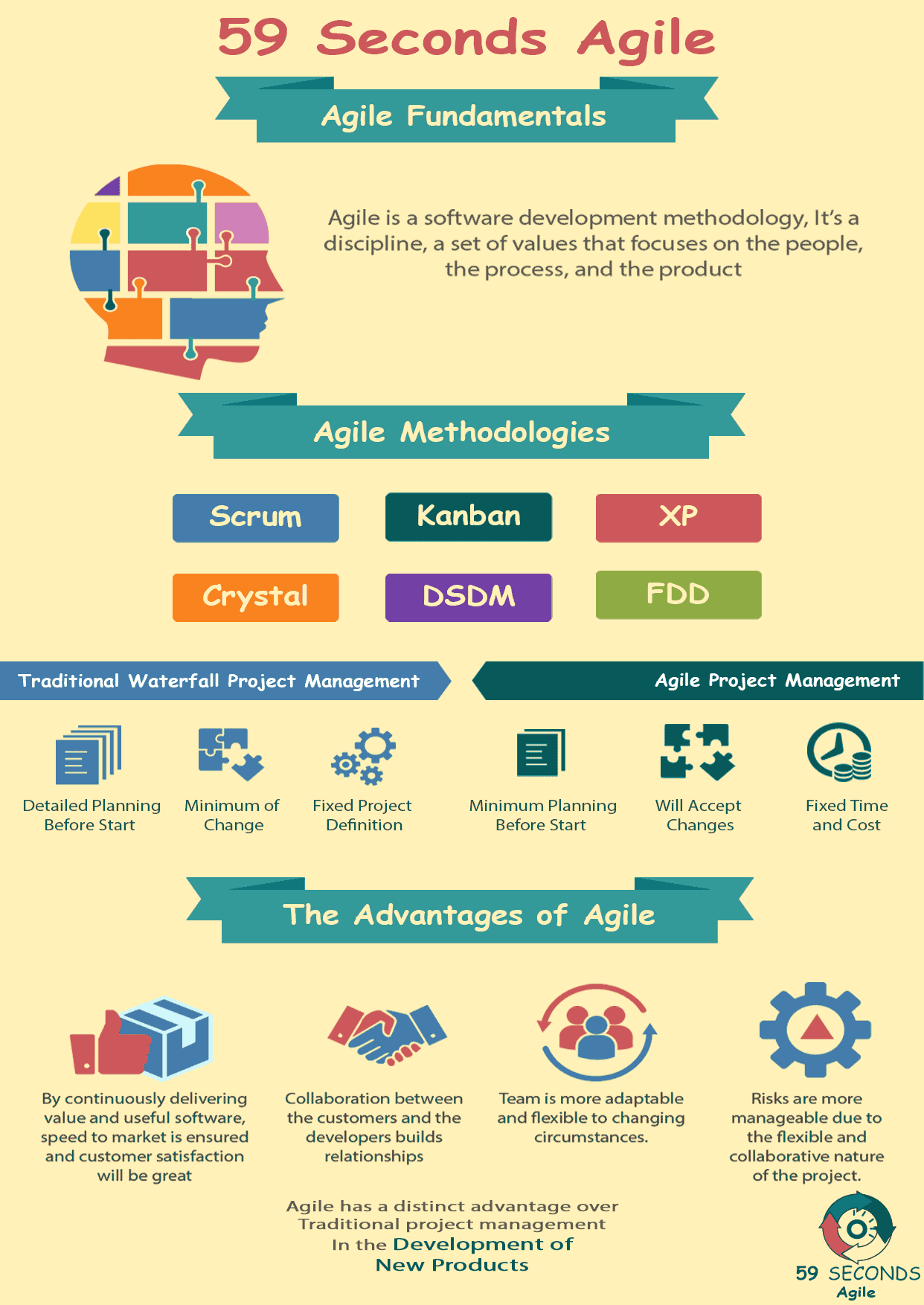This article looks to discuss ‘What are the Agile Principles?’, and looks to provide an insight into each of the 12 Agile Principles. This starts with the first principle of “Our highest priority is to satisfy the customer through early and continuous delivery of valuable software”.
The Agile Fundamentals
A 59 Seconds Agile Video Animation
What are the Agile Principles for Scrum Masters
A 59 Seconds Agile Article
When the Agile Manifesto was drawn up in 2001, it embodied four values and twelve principles that signaled a new approach to application development. The first and most important principle states:-
“Our highest priority is to satisfy the customer through early and continuous delivery of valuable software”.
This is a simple enough statement to understand. What is not so obvious is the effort required to keep to the implied promise in this principle. It calls for:-
What are the Agile Principles? Valuable Software
● Valuable software. To the customer that means software that fits their requirements and is defect-free. To achieve this, the requirements must be carefully constructed and the software must be rigorously tested. The Seventh Principle states that “Working software is the primary measure of progress”, that is software that has been debugged and performs according to specification.

What are the Agile Principles? Early Delivery
● Early delivery. The software must be delivered as early as possible. This is achieved in two ways, firstly by delivering the leanest possible product that will fulfill the customer expectations, without any frills attached. The Tenth Principle describes this as “Simplicity”. The second action is to break down the code into small work packets that can be coded and tested in a short time of two to eight weeks. This is stated in the Third Principle.
What are the Agile Principles? Continuous Delivery
● Continuous delivery. This requires that the pace of delivery must be constant and sustained. This is achieved by holding retrospectives frequently, so that continuous improvement can be applied to the process and practice to optimize efficiency. Through regular reviews, the pace of development can be increased or at least sustained throughout the project. The Eighth Principle states that “Agile processes promote sustainable development”. calls for “Customer collaboration”.

What are the Agile Principles? Satisfy the Customer
● Our highest priority is to satisfy the Customer through early and continuous delivery of valuable software
In agile, the release of a working version of the software begins as soon as the first iteration is completed. This working version of the product can be delivered to the users. The development team cannot proceed to the next iteration until the current release has satisfied the users. Due to this, the development team will always be focused towards user satisfaction.
What are the Agile Principles? Welcome changing Requirements
● Welcome changing Requirements, even late in Development. Agile processes harness change for the Customers competitive advantage
In most projects, the users of a product are not aware of the entire project requirements at the start of the project. Also, today’s environment is very dynamic in nature and project requirements are subject to change. Agile, unlike other project development frameworks, welcomes changing requirements, even late in development. Both the potential users of the product and the product developers can harness change and implement it even late in development for a competitive advantage.
What are the Agile Principles? Deliver working software frequently
● Deliver working software frequently, from a couple of weeks to a couple of months, with a preference to the shorter timescale
In Agile, the developers are focused towards releasing the software in small increments and after short development cycles, normally known as “iterations” or “sprints”. After each short development cycle, a working version of the software is released to the users.
Prev <— Continue Reading —> Next
User Stories Applied
A 59 Seconds Agile Book Review
User Stories Applied by Mike Cohn is one of our favourite books on Agile User Stories. The book starts with an overview into user stories, and details what a user story is and the different aspects of them. He then discusses how to go about writing a user story, and provides details of the INVEST criteria that can be used to determine if the story is meeting all of its objectives. Next Mike gives an in depth discussion of who user stories are written for and where to begin when gathering the details for them. The book then discusses acceptance testing user stories, including how to go about specifying these criteria and the responsibilities of the development team and customers during this process.
Prev <— Continue Reading —> Next
Learn More
Agile Project Management Training Courses
Agile Fundamentals
A 59 Seconds Agile Infographic

